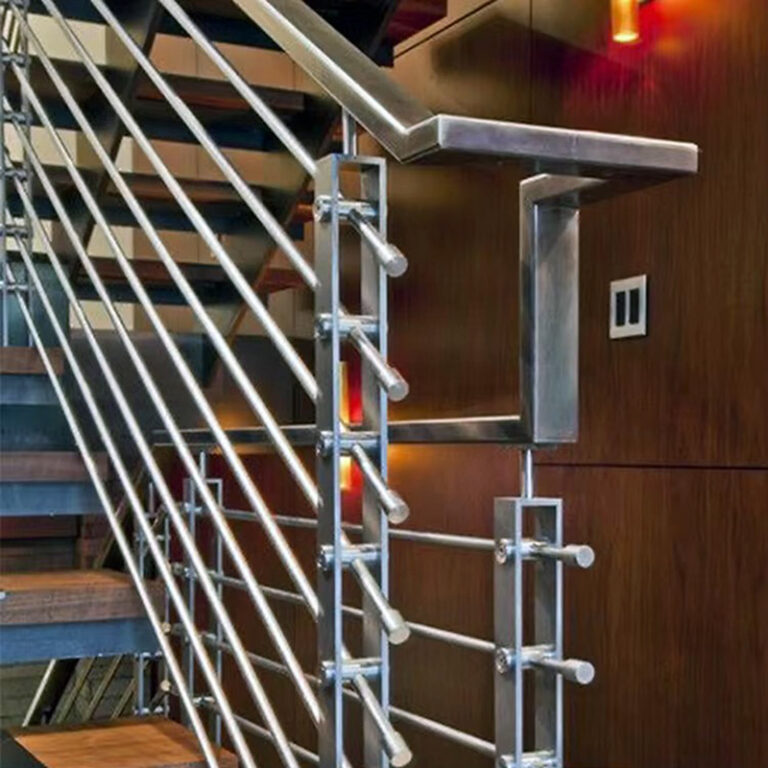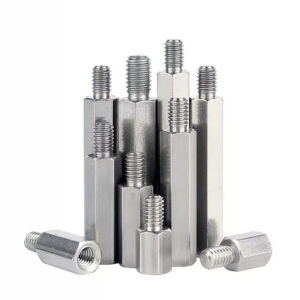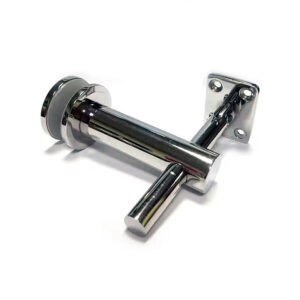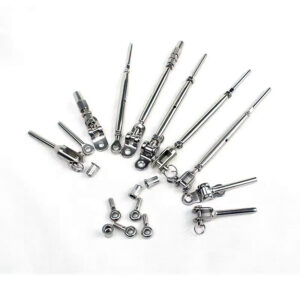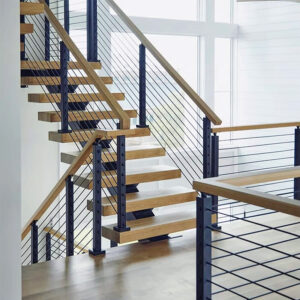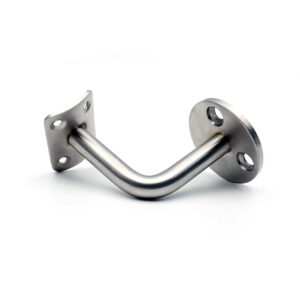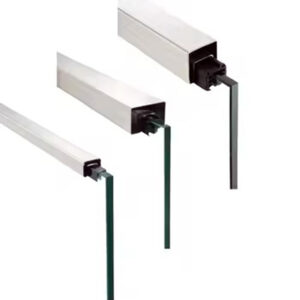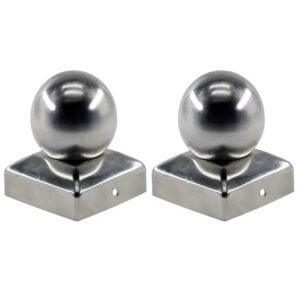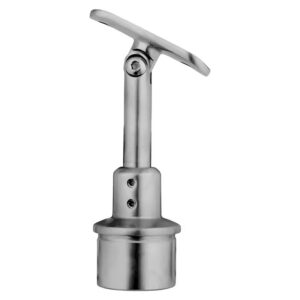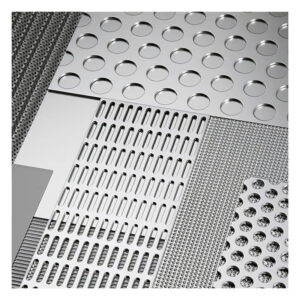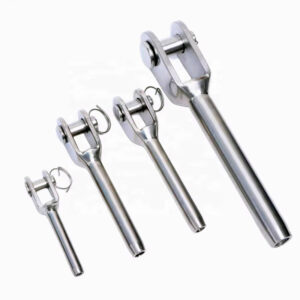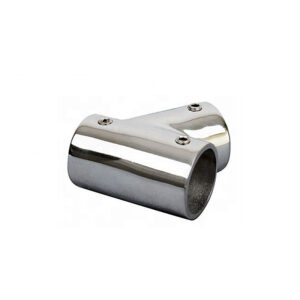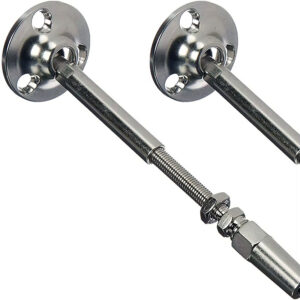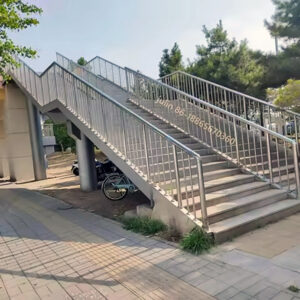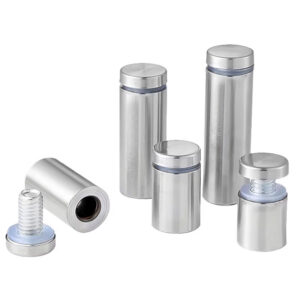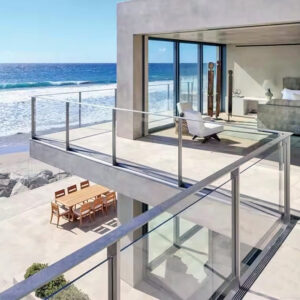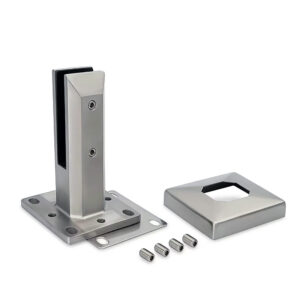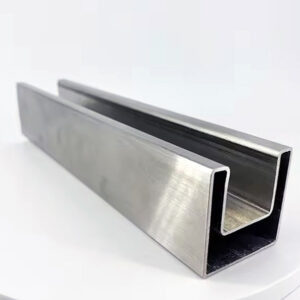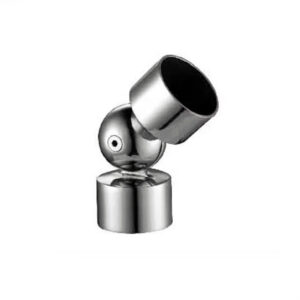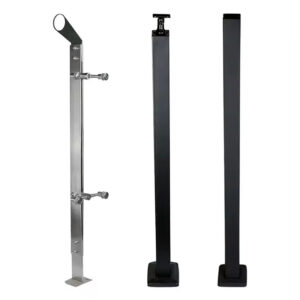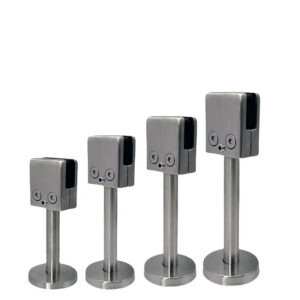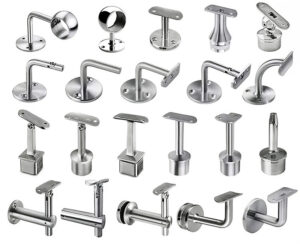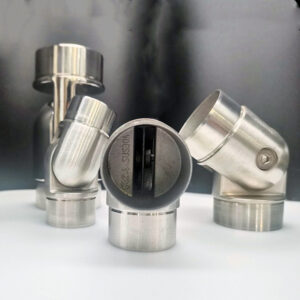Finding reliable rectangular top rail assemblies shouldn’t be this complicated. After 23 years building railing systems for contractors, distributors, and engineers, we’ve learned that most projects fail on three basics: parts that don’t fit specifications, installation delays that blow budgets, and components that require constant maintenance. The solution isn’t fancier hardware—it’s precision manufacturing, proven system integration, and support that shows up when you need it.
Core System Components & Performance Reality
Handrail Assembly Options
Our rectangular top rail assemblies integrate with wall-mount, post-mount, surface-mount, and continuous mounting systems. Each assembly uses standardized connection points that fit the first time, reducing field adjustment and installation delays.
Wall-Mount Systems: 304 stainless brackets handle 200 lbs concentrated load with 16″ stud spacing. Standard rail profiles accommodate 1.5″ x 3″ and 2″ x 4″ rectangular tubes with consistent wall thickness for welding reliability.
Post-Mount Integration: Compatible with round and square posts from 2″ to 4″ diameter. Adjustable connection hardware compensates for typical construction tolerances without custom fabrication.
Surface-Mount Solutions: Base plates engineered for concrete anchor systems meeting IBC requirements. Pre-drilled patterns match standard anchor spacing for faster installation.
Material Engineering That Matters
304 Stainless Standard: Interior applications, dry environments, cost-effective performance. Typical service life exceeds 20 years with minimal maintenance in controlled conditions.
316L Marine Grade: Coastal projects, industrial environments, chemical exposure. Higher initial cost offset by reduced replacement and maintenance over 25+ year service life.
Surface Treatment Reality: Brushed finish (#4) provides optimal durability-to-cost ratio for most commercial applications. Mirror polish adds 15-20% cost but delivers superior cleanability for high-traffic areas.
Modular System Benefits
Standardized components mean distributors carry fewer SKUs while contractors get parts that work together reliably. Our rectangular top rail fabrication 316L processes ensure consistent tolerances across production runs—critical for multi-phase projects where components must match months apart.
“Standardized railing components reduce installation time by 35-40% compared to custom fabrication approaches.” —Construction Industry Institute
▶ Get Technical Specifications ◀
Technical Specifications
Load Capacity by Application
| Application Type | Concentrated Load | Uniform Load | Safety Factor |
|---|---|---|---|
| Residential | 200 lbs | 50 lbs/ft | 2.5:1 |
| Commercial | 200 lbs | 50 lbs/ft | 3:1 |
| Industrial | 300 lbs | 100 lbs/ft | 3:1 |
| Public Assembly | 200 lbs | 50 lbs/ft | 4:1 |
Material Comparison Matrix
| Grade | Tensile Strength | Corrosion Resistance | Cost Index | Best Applications |
|---|---|---|---|---|
| 304 | 75,000 psi | Good | 1.0x | Interior, dry environments |
| 316L | 81,000 psi | Excellent | 1.4x | Marine, industrial, coastal |
Installation Time Estimates
| System Type | Linear Feet/Day | Crew Size | Special Tools Required |
|---|---|---|---|
| Wall Mount | 80-120 ft | 2 people | Standard power tools |
| Post Mount | 60-100 ft | 2 people | Level, measuring tools |
| Surface Mount | 40-80 ft | 3 people | Hammer drill, anchors |
Real Project Applications & Results
Commercial Office Buildings
A 12-story office complex in Denver required 2,400 linear feet of rectangular top rail assemblies across stairwells and mezzanine levels. Using our marine grade rectangular rail ODM approach, the contractor completed installation 6 days ahead of schedule.
Project Specs: 304 stainless, brushed finish, wall-mount configuration
Installation Rate: 95 linear feet per day with 2-person crew
Cost Impact: Standardized components reduced field labor by 28%
Compliance: Full IBC and ADA requirements met with standard components
Multi-Unit Residential Complex
450-unit apartment project in Florida coastal area required corrosion-resistant solutions with budget constraints. Our commercial rectangular rail systems provided the durability-cost balance that worked.
Material Selection: 316L stainless for exterior, 304 for interior applications
System Integration: Modular design allowed phased installation across 18-month construction schedule
Performance Results: Zero callback issues after 3 years of service
Maintenance Reality: Annual cleaning sufficient; no replacement components required
“Modular railing systems cut our inventory complexity by 60% while improving installation predictability.” —National Association of Home Builders
Industrial Manufacturing Facility
Chemical processing plant in Texas needed rectangular top rail assemblies that could handle industrial environment exposure while meeting OSHA requirements for elevated platforms and walkways.
Challenge: Aggressive chemical atmosphere, high traffic loads, strict safety compliance
Solution: Custom rectangular rail components in 316L with special surface treatment
Results: Installation completed in 4-day shutdown window; performance exceeds specifications after 5 years
Cost Analysis: Higher initial material cost offset by zero maintenance requirements
▶ Discuss Your Specific Project ◀
Marine & Waterfront Projects
Precision rectangular manufacturing for pier and dock applications requires understanding both structural demands and corrosion challenges. Our 23 years of experience includes projects from Great Lakes marinas to Gulf Coast commercial facilities.
Environmental Factors: Salt spray, humidity, temperature cycling, UV exposure
Material Response: 316L stainless with specific surface treatments maintains appearance and performance
Installation Considerations: Marine environments require modified anchoring and sealing approaches
Service Life: Properly specified systems deliver 25+ year performance with minimal intervention
Installation Support & System Integration
Pre-Installation Engineering
Our technical team reviews project drawings to identify potential fit-up issues before manufacturing begins. This front-end investment prevents costly field modifications and schedule delays.
Drawing Review: Connection details, load paths, anchor requirements evaluated against site conditions
Material Optimization: Specifications matched to actual environment and performance requirements
Timeline Coordination: Manufacturing scheduled to match construction sequence and delivery windows
Field Installation Reality
Tool Requirements: Standard power tools handle 90% of installation tasks. Specialized equipment limited to anchor drilling and heavy component positioning.
Crew Training: Installation guides written for general construction crews—no specialized railing experience required.
Quality Control: Standardized components reduce field inspection time while ensuring consistent performance.
▶ Connect with Installation Support ◀
Supply Chain Reliability
Twenty-three years of manufacturing experience taught us that contractors need parts when promised, not when convenient. Our inventory and logistics systems support project schedules, not just order processing.
Inventory Strategy: Standard components stocked for immediate shipment; custom elements manufactured to match project timelines
Batch Coordination: Multi-phase projects receive components with consistent specifications across delivery dates
Quality Assurance: Manufacturing precision ensures field fit-up without adjustment or rework
Frequently Asked Questions
How do I select between 304 and 316L stainless for my project?
304 stainless works for interior applications, dry environments, and projects where cost control is primary concern. Expected service life exceeds 20 years with basic maintenance.
316L stainless required for coastal locations (within 10 miles of salt water), industrial environments with chemical exposure, and projects where maintenance access is limited. Higher initial cost typically justified by extended service life and reduced maintenance requirements.
What’s realistic for installation timeline on a typical project?
Installation rates depend on mounting configuration and site access. Wall-mount systems: 80-120 linear feet per day with 2-person crew. Post-mount systems: 60-100 linear feet per day. Surface-mount installations: 40-80 linear feet per day due to anchor drilling requirements.
Complex geometry, restricted access, or coordination with other trades can reduce these rates by 25-40%.
How do rectangular top rail assemblies integrate with glass and cable infill systems?
Our modular design accommodates glass clamps, cable tensioners, and other infill hardware without custom modifications. Standard rail profiles include mounting provisions for common infill systems.
Glass applications: Rail design includes drainage provisions and structural support for wind loads on glass panels.
Cable systems: Through-rail cable routing maintains clean appearance while providing access for tensioning and maintenance.
What inventory strategy works best for distributors?
Focus on standard components in both 304 and 316L materials. Stock brushed finish (#4) for immediate availability; mirror polish typically ordered for specific projects.
High-velocity items: Standard rail sections, common brackets, basic mounting hardware
Project-specific items: Custom lengths, special configurations, unique mounting solutions
Inventory turns: Standard components turn 8-12 times annually; special items managed on project basis
How do your rectangular rail systems compare with alternatives?
Aluminum systems: Lower material cost, adequate for many applications, but limited load capacity and durability in harsh environments. Installation rates similar to stainless steel.
Carbon steel painted: Lowest initial cost, requires ongoing maintenance, finite service life in exterior applications. Higher long-term cost due to refinishing requirements.
Custom fabrication: Unlimited design flexibility, extended lead times, higher costs, field fit-up challenges. Best for unique architectural requirements.
Our stainless steel systems provide optimal balance of performance, durability, and lifecycle cost for most commercial and industrial applications.
What technical support do you provide during installation?
Pre-installation: Drawing review, specification verification, installation sequence planning
During installation: Technical hotline, field problem-solving, modification recommendations
Post-installation: Performance evaluation, maintenance guidance, expansion planning
Our 23 years of experience means we’ve solved most installation challenges before—we can help you avoid common problems and handle unique situations.
▶ Talk to Our Technical Team ◀
Performance Comparison Analysis
System Reliability Matrix
| System Type | Initial Cost | Installation Time | Maintenance Frequency | 20-Year Total Cost |
|---|---|---|---|---|
| Stainless Steel | 1.4x | Standard | 5-year intervals | 1.0x |
| Aluminum | 1.0x | Standard | 3-year intervals | 1.2x |
| Painted Steel | 0.7x | Standard | 2-year intervals | 1.8x |
| Custom Fabrication | 2.2x | Extended | Variable | 2.5x |
Why Esang Metal Systems Work
Twenty-three years of manufacturing rectangular top rail assemblies taught us that contractors need three things: parts that fit, delivery that happens, and support that works. We’ve built our systems and processes around these requirements.
Manufacturing Precision: Tolerances maintained across production runs ensure consistent fit-up
Material Sourcing: Direct relationships with steel mills provide quality control and cost stability
Technical Expertise: Engineering team understands both manufacturing capabilities and field installation reality
Supply Chain Integration: Inventory and logistics systems designed around construction project schedules
The railing hardware business isn’t rocket science—it’s precision manufacturing, practical engineering, and reliable execution. After 23 years, we’ve learned what works and what doesn’t. Our rectangular top rail assemblies deliver the performance you need with the support you deserve.
